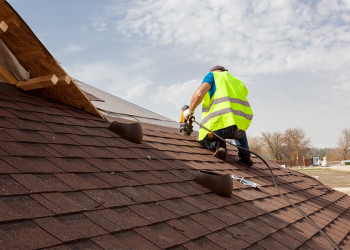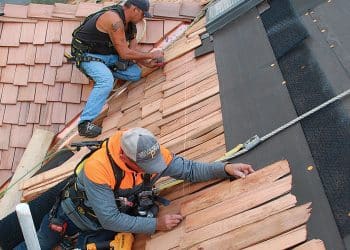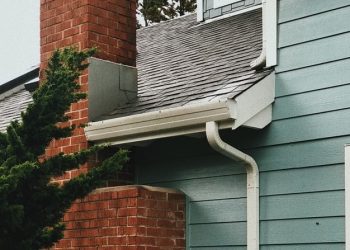As the winter season steadily approaches, you should winterize your home. If you were unable to prepare your roof for the cold winter weather, you could be in for a costly ordeal.
A vital step in winterizing your house is to make sure that the roof is ready to face the harsh cold conditions. Regular roof maintenance before winter can keep your home warm and comfortable, preventing expensive repairs. The roof is likely to endure damage during winter due to the cold temperatures and heavy snow.

Check out several tips to help you with roof repairs this upcoming winter.
Replace Shingles
Loose shingles and those that are missing or show signs of damage will expose your house to leaks and water damage if not dealt with before winter.
Once the shingles break, water can move underneath and eventually travel inside your house. If the shingles are loose, the strong winds during winter can easily blow them away. If you only have a few shingles with signs of damage and within reach, you can replace them. In case several are damaged, and you find it uncomfortable to work on the roof, you can hire a professional to handle the roof repair job.
Check the Flashing
Most homeowners fail to notice the roof flashing. However, it’s a crucial component of a properly maintained roof. It’s responsible for protecting the roof against water damage by shifting the water from certain parts of the roof.
You should pay close attention around the chimney and roof overhangs and valleys. They should be in good condition to prevent any leaks. Take note that the roof valleys and overhangs are susceptible to the formation of ice dams.
Inspect the Caulking
It would be best if you inspect the caulk or sealant around chimneys, vent pipes, and counter-flashing. During winter, the caulk or sealant might separate or crack, especially if it’s old and dry.
New caulking can expand and contract with cold and warm weather. It keeps the essential junctures in the roof dry and watertight. Fresh caulk is flexible and holds a better seal once cured. Don’t forget to remove the old caulking before applying a new one. Scrape with a screwdriver, but take care not to puncture or penetrate the flashing or roofing membrane below.
Remove Snow On The Roof
You should have a snow removal tool to avoid the buildup of snow on your roof. Once the snowfall reaches up to six inches, you should rake your roof.
Preventing the piling up of snow on the overhangs create a route for runoff to move off the roof quickly instead of solidifying and causing ice dams and leaks. Look for a plastic roof rake or one that has rollers so that you no longer need to brush the granules off the shingles. Don’t forget to watch out for icicles and check the roof for any loose shingles or flashing to avoid hooking onto them accidentally.
Check The Roof Coating
The coating of the roof can protect against the elements. The application of roof coating can prolong the life of your roof and protect it against the harsh winter conditions. If the coating of your roof seems worn out and brittle, it might be time to apply a multi-ply membrane that offers a protective element. The layer also helps protect the roofing metal that is likely to rust from constant exposure to moisture during the winter.
Repair Plumbing Vent Boots
Most cases of roof leaks might be due to issues with the plumbing vent boots. It would be best if you inspect the plastic bases for signs of damage or cracks, as well as the rubber boot bordering the pipe. If there are damages, you need to buy new ones. In case the boot is still in sound condition, replace the nails with rubber-washer screws.
Clean The Gutters And Downspouts
Although not part of the roof, the gutters and downspouts require regular cleaning before the winter season arrives. It would be best if you remove dirt to prevent blockages that often lead to destructive ice dams on the roof during winter.
Once ice builds up around the gutters and eaves, ice dams form which block the drainage and results in a freeze-thaw cycle that divides the shingles from the roof deck, allowing a point of entry for moisture.
Trim The Trees
If you want to avoid roof damage during the winter season, you should trim the trees close to the roof, especially the overhanging branches. A snowstorm can break off the branch over your home, resulting in severe damage to your roof that requires a significant roof repair job.
As the winter season approaches, your house must be ready to face the winter elements, especially the roof. Once you encounter any issues with your roof as the cold season approaches, you can deal with them with the help of these repair tips. With regular roof maintenance and timely repairs, your roof will stay strong under harsh weather for years to come.







